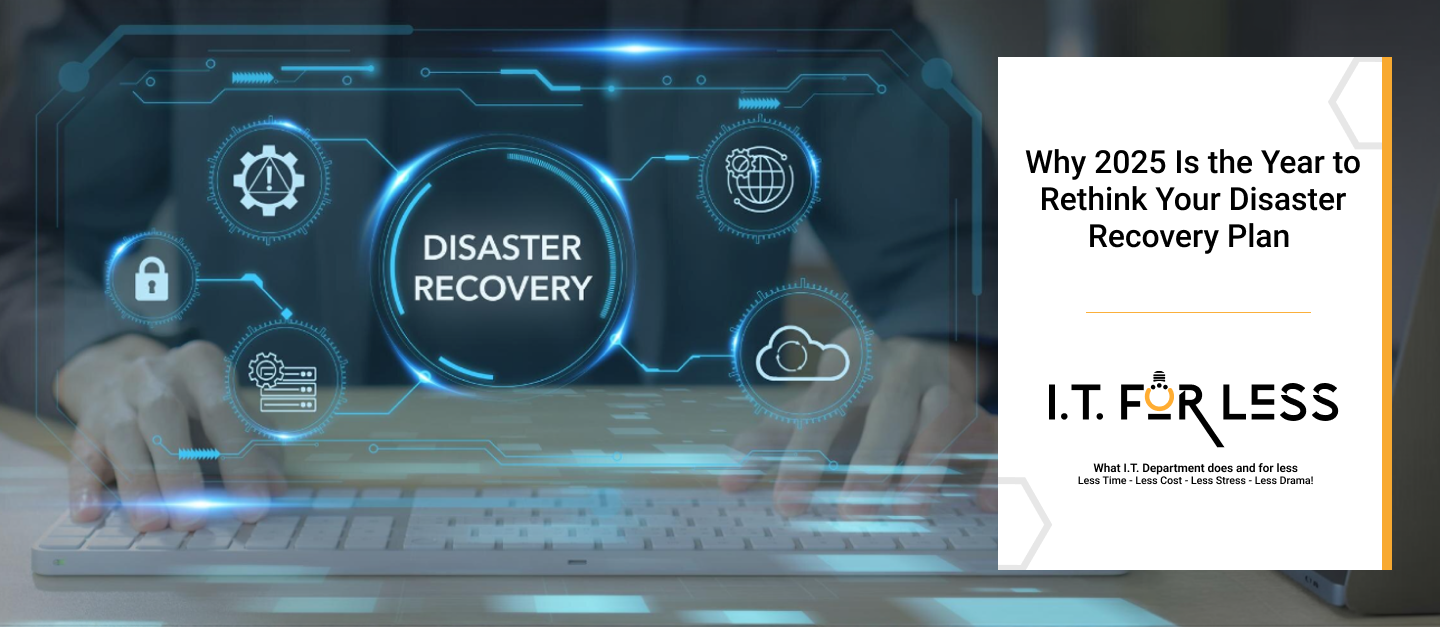In the ever-evolving world of technology, business continuity is no longer a luxury—it’s a necessity. And as we move deeper into 2025, one thing is clear: if your disaster recovery (DR) plan hasn’t been updated recently, it’s time for a serious rethink.
From rising cyber threats to increasingly unpredictable weather events, the risks have changed—and your disaster recovery strategy needs to keep up.
The Risk Landscape Has Shifted
1. Cyberattacks Are More Sophisticated
Ransomware attacks surged in 2024 and show no sign of slowing down in 2025. Cybercriminals are targeting backups, exploiting remote work vulnerabilities, and using AI to automate attacks. A traditional DR plan built around physical infrastructure or outdated assumptions may no longer offer sufficient protection.
2. Cloud Dependency Is at an All-Time High
Most businesses now operate in hybrid or multi-cloud environments. If your DR plan doesn’t account for the unique needs of cloud-native applications and platforms, you’re leaving yourself exposed to data loss and extended downtime.
3. Remote Work Is Here to Stay
With remote and hybrid teams becoming standard, your recovery plan must address distributed operations. Can your systems be restored and accessed securely from anywhere? If not, recovery time could be significantly delayed.
4. Compliance Demands Are Increasing
Data protection regulations are tightening worldwide. A solid DR plan helps ensure you can recover sensitive data in a secure and compliant manner, avoiding fines and reputational damage.
What a Modern Disaster Recovery Plan Should Include in 2025
- Cloud-First Backup Strategy:
Scalable, secure, and offsite—ready for fast restores.
- Automated Failover Systems:
Ensure minimal downtime and uninterrupted service, even during outages.
- Regular Testing & Simulations:
Your plan is only as good as your last test. Schedule routine drills to keep your team prepared.
- Security-Integrated Recovery:
Include threat detection and remediation in your DR process, not just restoration.
- Cross-Platform Compatibility:
Whether it’s on-prem, cloud, SaaS, or hybrid—your DR strategy should cover it all.
Why Now, and Why You Can’t Afford to Wait
Technology is advancing fast, but so are the risks. A stale DR plan can’t protect your business from today’s threats—let alone tomorrow’s. 2025 is the perfect moment to realign your strategy with modern tools, cloud capabilities, and real-world scenarios.
Don’t wait for a disaster to realize your plan was outdated.
Partner with I.T. For Less today and take the first step toward making your IT flow as effortlessly—and securely—as your ambition.
Let’s future-proof your business together.
